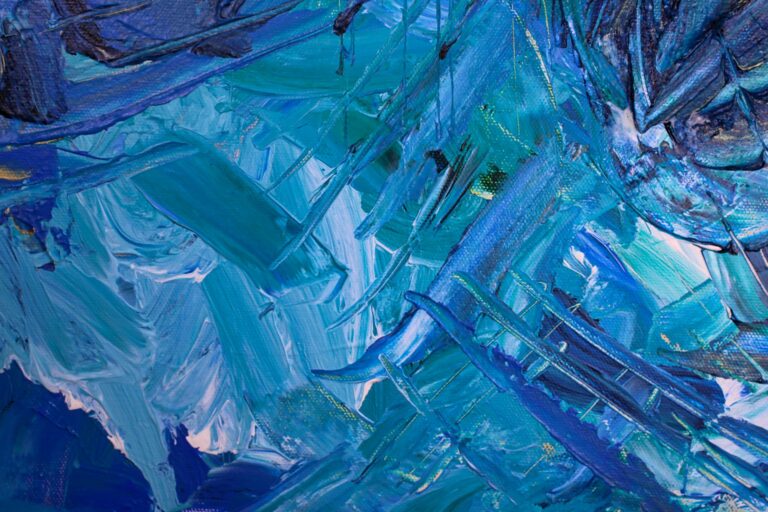
Blue appears everywhere: in our eyes, our flags, and our landscapes. Yet, despite being such a familiar color, it remains surprisingly rare in nature. Long absent from human history, today it is omnipresent. But where does this fascination with blue come from?
It has been shown that in antiquity, blue was absent — the word itself didn’t exist. In the 19th century, British scholar William Gladstone made this observation during his study of The Iliad and The Odyssey. By noting each passage where Homer used color in his descriptions, Gladstone found references to black, white, yellow, green, and occasionally red — but nothing for blue. For Homer, the sky wasn’t blue, and the sea was described as “dark as wine.”
In ancient Chinese texts, South Asian poetry, and even Irish legends, there is no mention of blue. It was only later that the blue pigment was invented in Egypt.
Rarely used by ancient civilizations, blue is also hard to find in nature, whether among animals or plants.
So, why do some animals still manage to display this color? It’s due to structural coloration rather than pigment. In many animals, blue is produced by creating structures that alter the wavelength of light. For example, the blue morpho butterfly gets its color from the scale-like ridges on its wings. These ridges bend light in such a way that only the blue wavelength is reflected.
In the plant kingdom, fewer than 10% of the 350,000 known species show the color blue — far less than other colors such as green, red, or brown. Blue in plants is created by a pigment called anthocyanin, which is responsible for some plant colors. However, anthocyanins usually produce hues ranging from red to purple. Achieving a true blue requires very specific acidic conditions in the soil. So, naturally occurring blue is hard to come by!
Blue is also very uncommon in naturally occurring foods. Yet today, it is widely present in the food industry — even on our plates. “Blue raspberry” is a striking example of a flavor entirely invented by food manufacturers. This trend began after the ban of red dye No. 2, deemed carcinogenic in 1976. The discovery caused panic among consumers and negatively affected the popularity of red-colored foods. One outcome of this panic was the temporary discontinuation of red M&M’s, even though the brand had never used red dye No. 2. To boost sales, a new color was needed: blue was chosen for its novel and unique appeal.
Another factor contributing to the creation of blue raspberry was the fact that red was already associated with other flavors like strawberry and cherry. To differentiate them, manufacturers used blue. Consumers quickly came to associate this “blue taste” with blue raspberry — even though it doesn’t correspond to any real fruit.
Blue dyes themselves aren’t natural either. It wasn’t until the 2010s, after several health scandals, that manufacturers began seeking healthier alternatives. In fact, a 2007 study linked artificial food colorings to certain cancers and hyperactivity in children. Under pressure from consumers demanding “a healthier life with fewer additives,” some brands were forced to change their recipes. This is what happened to Smarties, which had to reformulate their food colorings. As a result, blue Smarties were withdrawn from the market for several years. Nestlé decided to eliminate artificial colorings from its sweets and replace them with natural alternatives.
Natural substitutes were easily found for certain colors — such as beetroot for red or turmeric for yellow. But no natural coloring could replicate the intensity of synthetic blue dyes: Brilliant Blue (Blue No. 1) and Indigo Carmine (Blue No. 2, also used to dye jeans).
Today, the only blue food dye authorized in Europe is blue spirulina. This algae contains phycocyanin, a pigment found in microalgae that gives it its coloring properties. Unlike colorants E133 and E131, spirulina poses no health risk, and blue Smarties have therefore returned to the market.
Blue, a color discovered relatively late due to its rarity in nature, has nevertheless become a part of our daily lives. Now omnipresent, it captivates with its calming and soothing qualities — to the point of symbolizing serenity and peace.